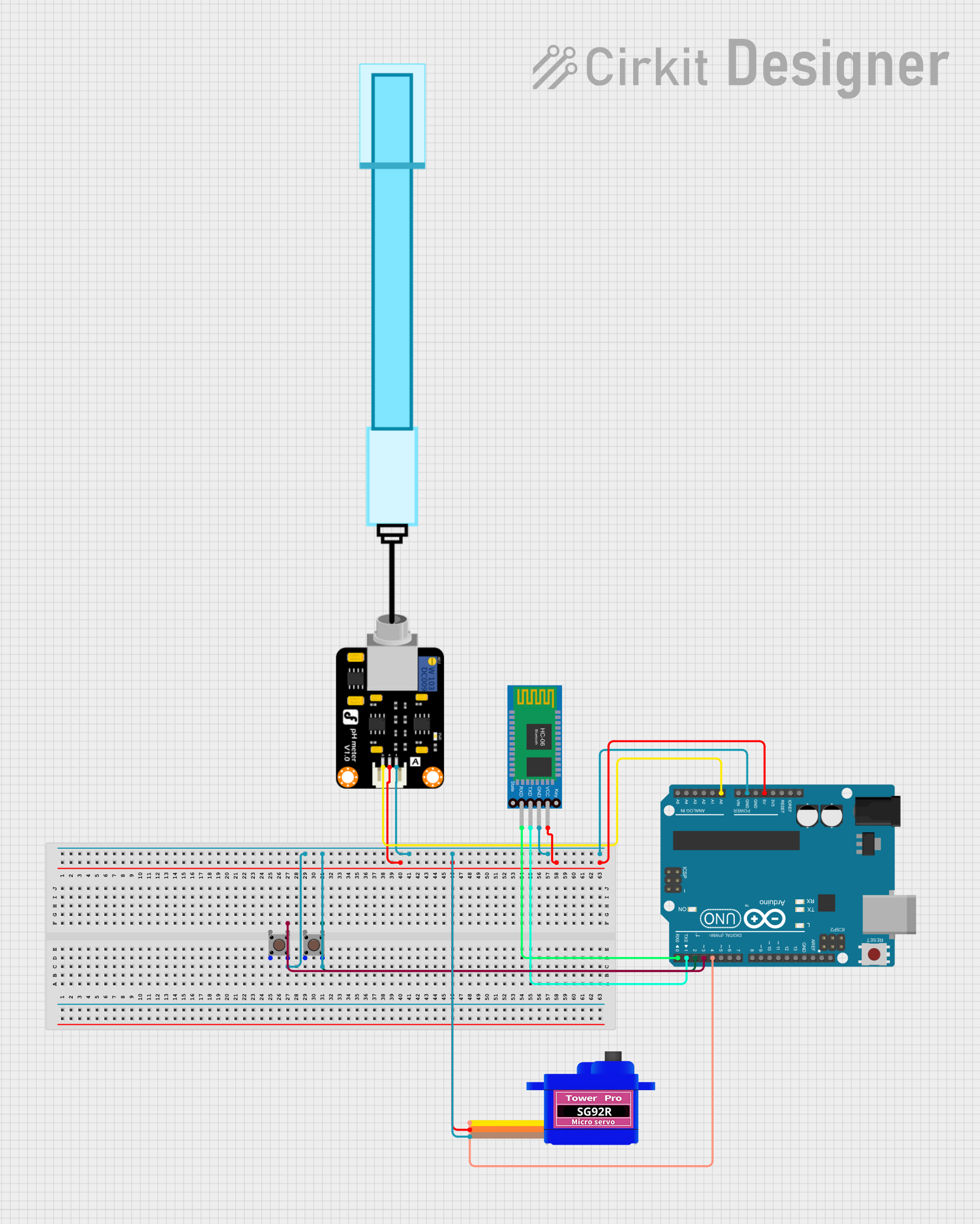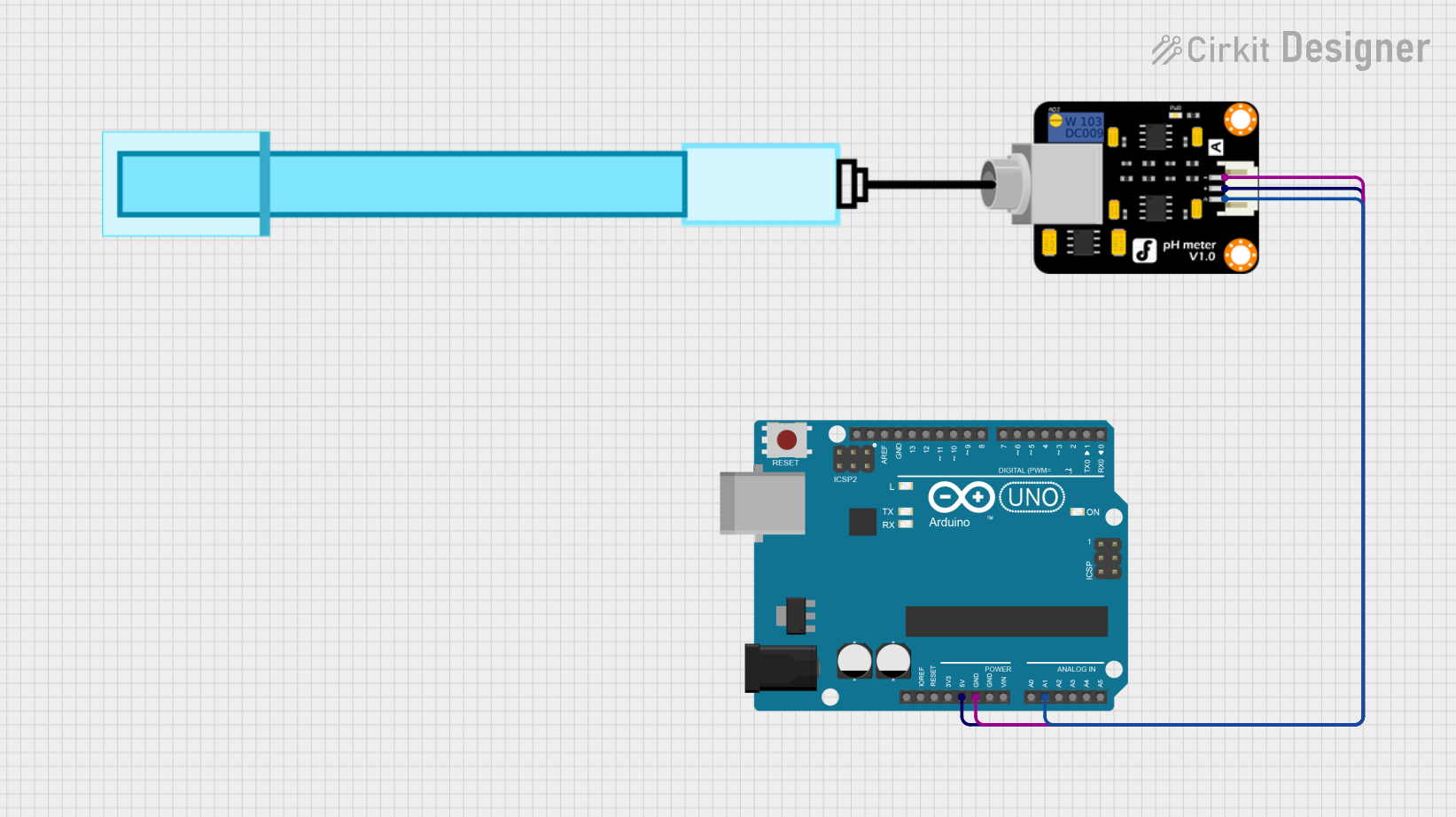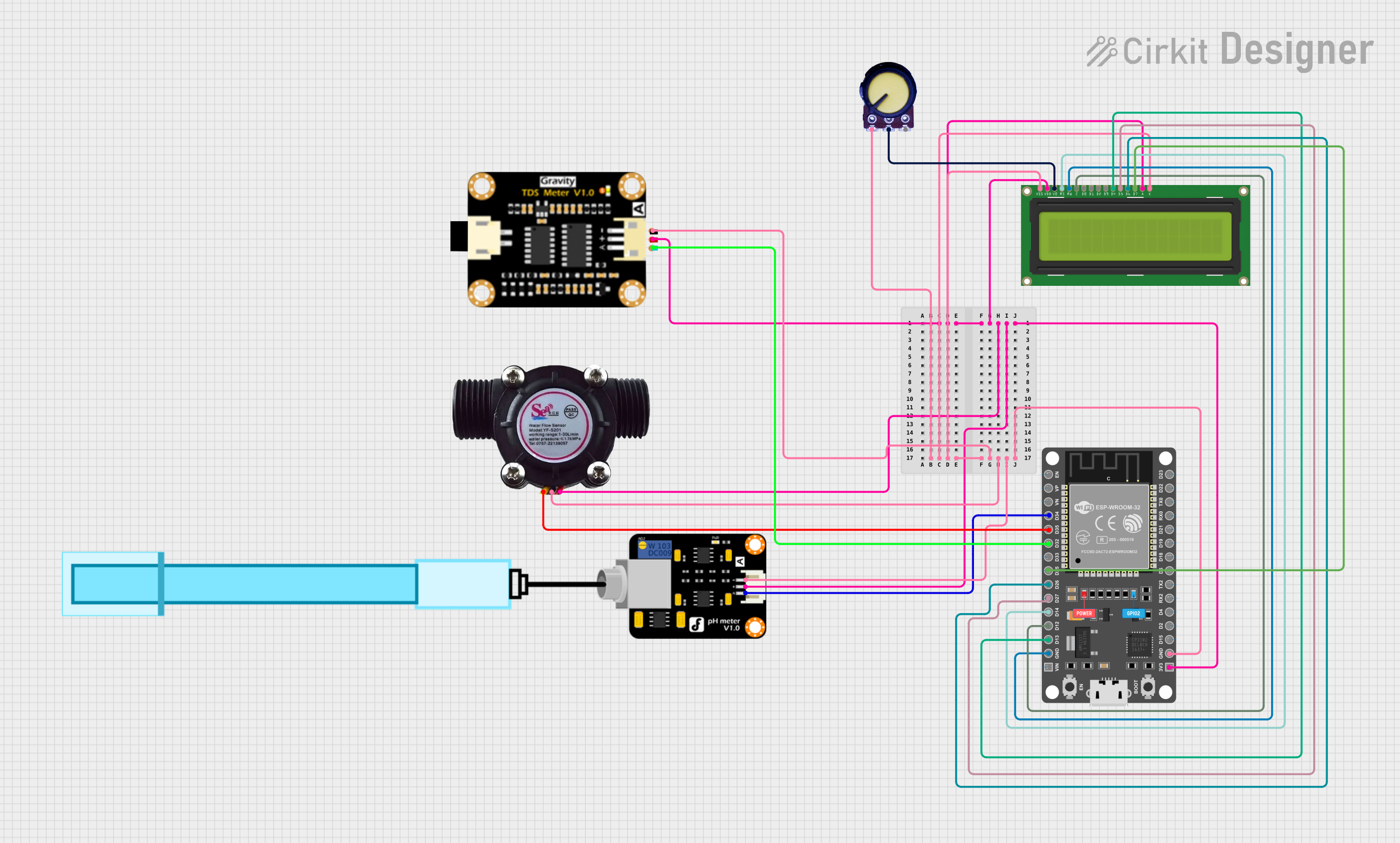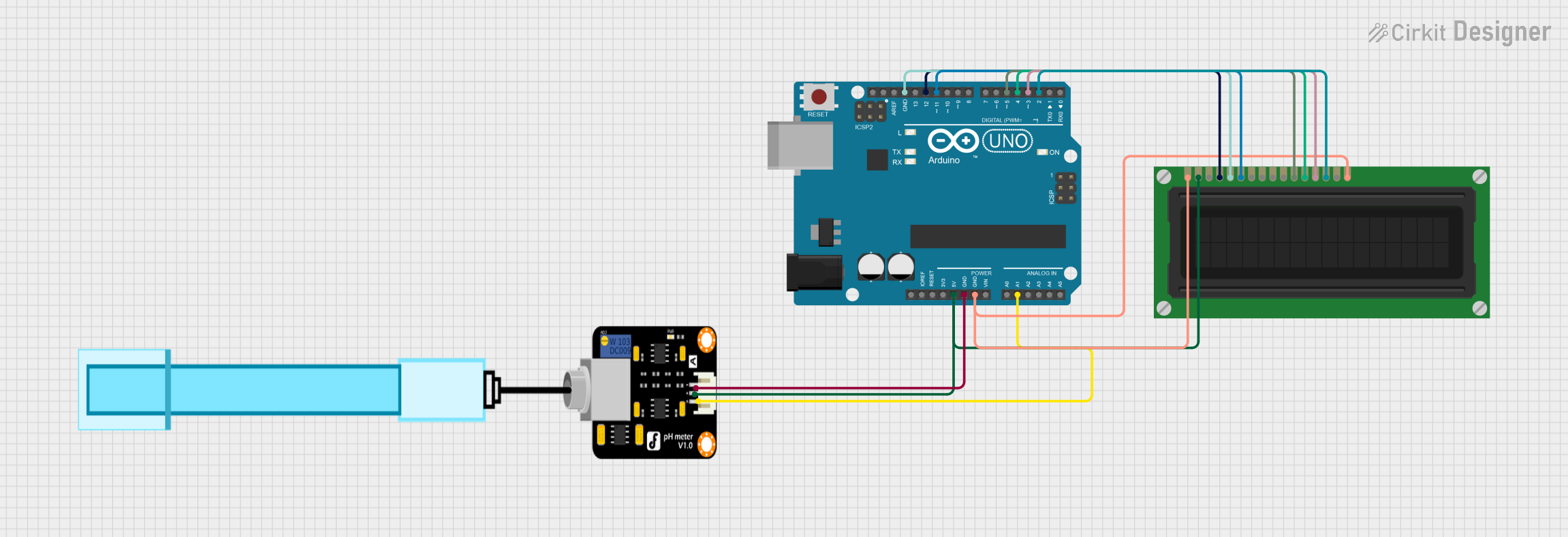
How to Use PH Meter: Examples, Pinouts, and Specs

 Design with PH Meter in Cirkit Designer
Design with PH Meter in Cirkit DesignerIntroduction
A pH meter is an electronic device used to measure the acidity or alkalinity of a solution, providing a digital readout of the pH level. It is widely used in various fields, including environmental monitoring, agriculture, food and beverage production, water treatment, and laboratory research. The device typically consists of a pH probe and a signal conditioning circuit that converts the probe's analog signal into a readable digital output.
Explore Projects Built with PH Meter

 Open Project in Cirkit Designer
Open Project in Cirkit Designer
 Open Project in Cirkit Designer
Open Project in Cirkit Designer
 Open Project in Cirkit Designer
Open Project in Cirkit Designer
 Open Project in Cirkit Designer
Open Project in Cirkit DesignerExplore Projects Built with PH Meter

 Open Project in Cirkit Designer
Open Project in Cirkit Designer
 Open Project in Cirkit Designer
Open Project in Cirkit Designer
 Open Project in Cirkit Designer
Open Project in Cirkit Designer
 Open Project in Cirkit Designer
Open Project in Cirkit DesignerCommon Applications and Use Cases
- Monitoring water quality in aquariums, pools, and wastewater treatment plants
- Testing soil pH for agricultural purposes
- Ensuring proper pH levels in food and beverage production
- Conducting chemical experiments in laboratories
- Measuring pH in cosmetics and pharmaceutical formulations
Technical Specifications
Below are the general technical specifications for a typical pH meter module:
| Parameter | Value |
|---|---|
| Operating Voltage | 3.3V - 5V DC |
| Operating Current | ≤ 10mA |
| pH Measurement Range | 0 - 14 pH |
| Accuracy | ±0.1 pH (at 25°C) |
| Temperature Range | 0°C - 60°C |
| Output Signal | Analog voltage (0 - 3V typical) |
| Calibration | Manual (via potentiometer) |
Pin Configuration and Descriptions
| Pin Name | Description |
|---|---|
| VCC | Power supply input (3.3V - 5V DC) |
| GND | Ground connection |
| AO | Analog output signal corresponding to the pH level |
| DO | Digital output (optional, used for threshold-based pH detection in some models) |
Usage Instructions
How to Use the pH Meter in a Circuit
Connect the pH Meter Module:
- Connect the
VCCpin to a 3.3V or 5V power source. - Connect the
GNDpin to the ground of your circuit. - Connect the
AOpin to an analog input pin of your microcontroller (e.g., Arduino UNO).
- Connect the
Calibrate the pH Meter:
- Immerse the pH probe in a standard buffer solution (e.g., pH 7.0).
- Adjust the potentiometer on the module until the output matches the expected pH value.
- Repeat the process with other buffer solutions (e.g., pH 4.0 or pH 10.0) for better accuracy.
Measure pH:
- Immerse the probe in the solution to be tested.
- Read the analog voltage output from the
AOpin and convert it to a pH value using the appropriate formula or calibration data.
Important Considerations and Best Practices
- Always rinse the pH probe with distilled water before and after use to prevent contamination.
- Store the pH probe in a storage solution or buffer solution when not in use to maintain its accuracy and longevity.
- Avoid exposing the probe to extreme temperatures or harsh chemicals that could damage it.
- Periodically recalibrate the pH meter to ensure accurate readings.
Example Code for Arduino UNO
Below is an example of how to interface a pH meter with an Arduino UNO to measure and display pH values:
// Define the analog pin connected to the pH meter's AO pin
const int pH_Pin = A0;
// Calibration values (adjust based on your calibration process)
const float voltageOffset = 0.0; // Adjust this based on calibration
const float pH_Slope = 3.5; // Typical slope value for pH conversion
void setup() {
Serial.begin(9600); // Initialize serial communication
Serial.println("pH Meter Initialization...");
}
void loop() {
// Read the analog voltage from the pH meter
int sensorValue = analogRead(pH_Pin);
float voltage = sensorValue * (5.0 / 1023.0); // Convert to voltage (5V reference)
// Convert voltage to pH value
float pH = (voltage - voltageOffset) * pH_Slope;
// Print the pH value to the Serial Monitor
Serial.print("pH Value: ");
Serial.println(pH);
delay(1000); // Wait for 1 second before the next reading
}
Notes on the Code
- The
voltageOffsetandpH_Slopevalues should be adjusted based on your specific calibration process. - Ensure the Arduino's analog reference voltage matches the pH meter's output range for accurate readings.
Troubleshooting and FAQs
Common Issues and Solutions
Inaccurate pH Readings:
- Cause: The pH meter is not calibrated.
- Solution: Calibrate the pH meter using standard buffer solutions.
Fluctuating or Unstable Readings:
- Cause: Electrical noise or improper grounding.
- Solution: Ensure proper grounding and use shielded cables if necessary.
No Output or Constant Reading:
- Cause: Faulty connections or damaged probe.
- Solution: Check all connections and replace the probe if necessary.
Probe Drying Out:
- Cause: The probe was not stored in a storage solution.
- Solution: Rehydrate the probe by soaking it in a storage solution for several hours.
FAQs
Q: How often should I calibrate my pH meter?
A: It is recommended to calibrate the pH meter before each use or at least once a week for consistent accuracy.
Q: Can I use tap water to rinse the pH probe?
A: No, always use distilled or deionized water to rinse the probe to avoid contamination.
Q: What is the lifespan of a pH probe?
A: A typical pH probe lasts 1-2 years with proper care and maintenance.
Q: Can the pH meter measure the pH of solid samples?
A: No, the pH meter is designed for liquid solutions. For solids, you may need to create a liquid suspension.